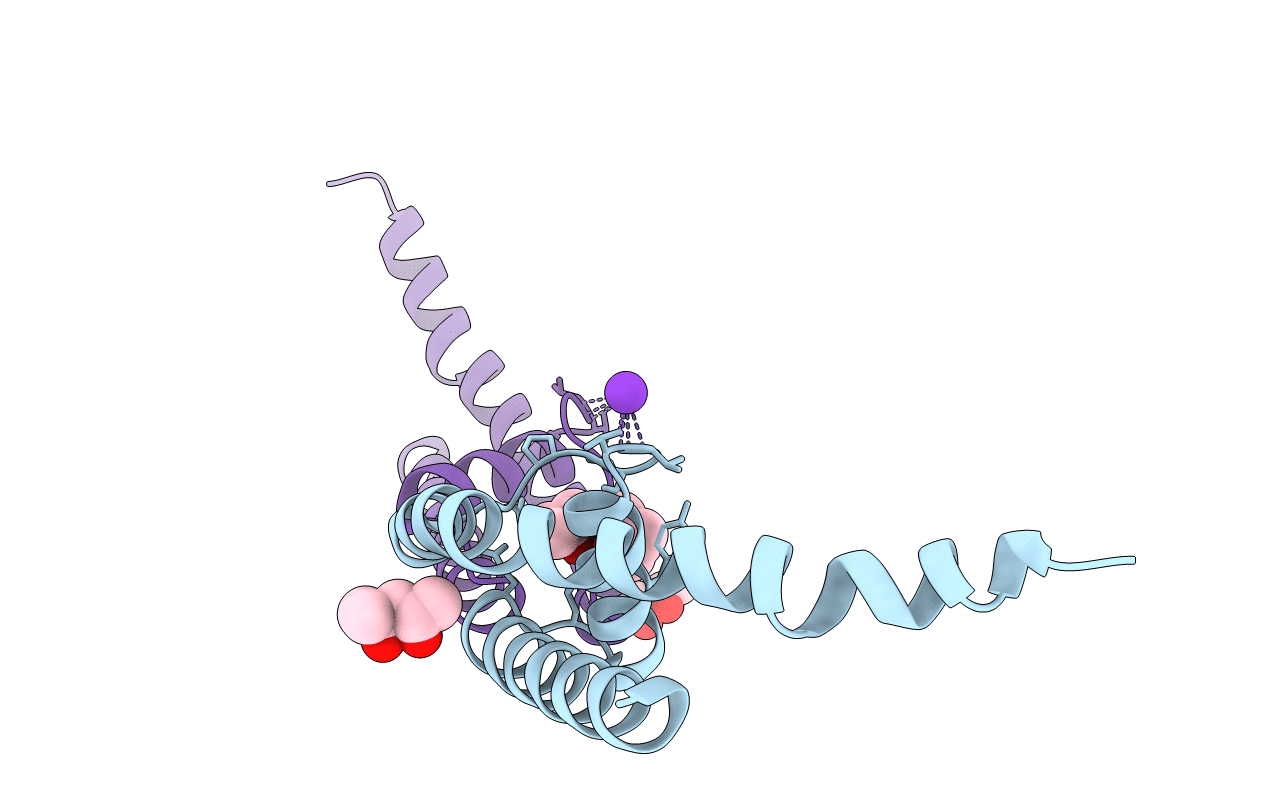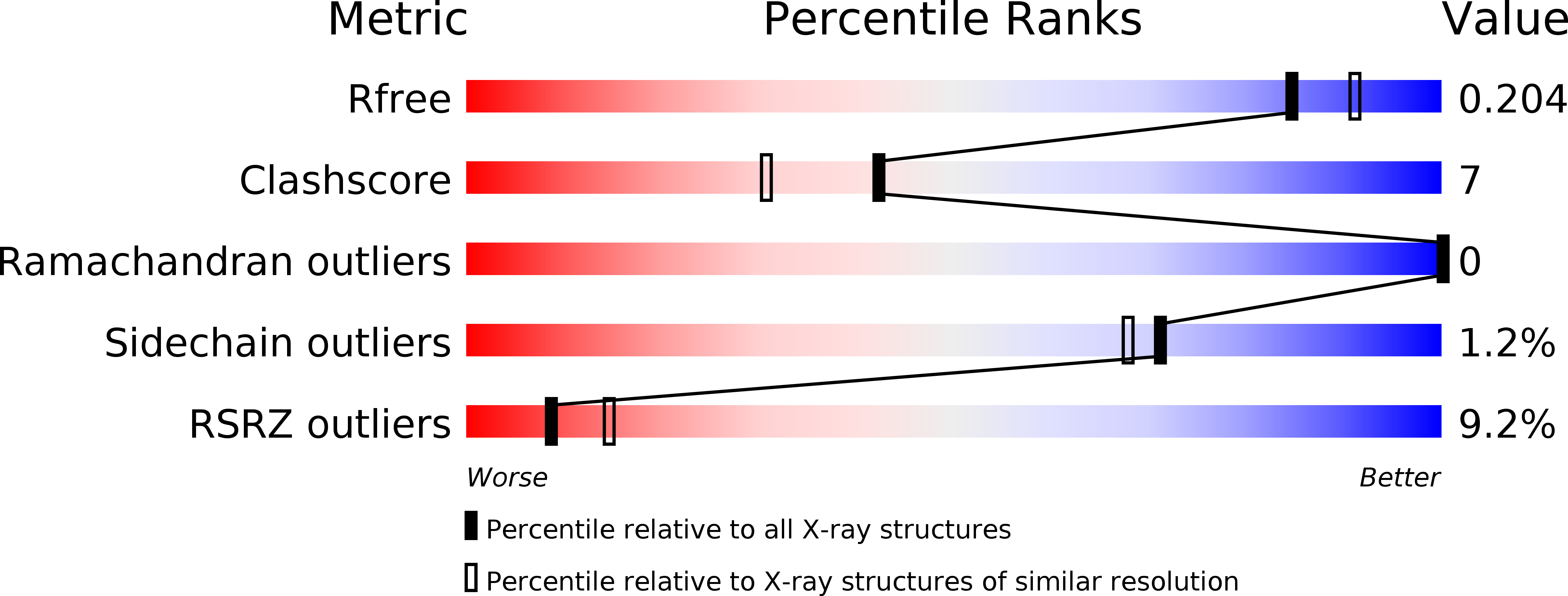
Deposition Date
2009-09-24
Release Date
2011-01-12
Last Version Date
2024-02-21
Entry Detail
PDB ID:
3K0D
Keywords:
Title:
Crystal Structure of CNG mimicking NaK mutant, NaK-ETPP, K+ complex
Biological Source:
Source Organism:
Bacillus cereus (Taxon ID: 1396)
Host Organism:
Method Details:
Experimental Method:
Resolution:
1.95 Å
R-Value Free:
0.23
R-Value Work:
0.20
Space Group:
I 4


